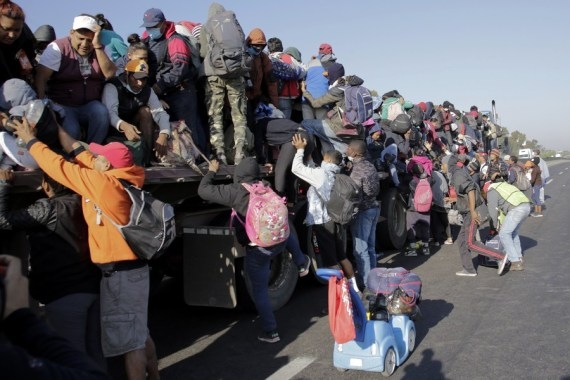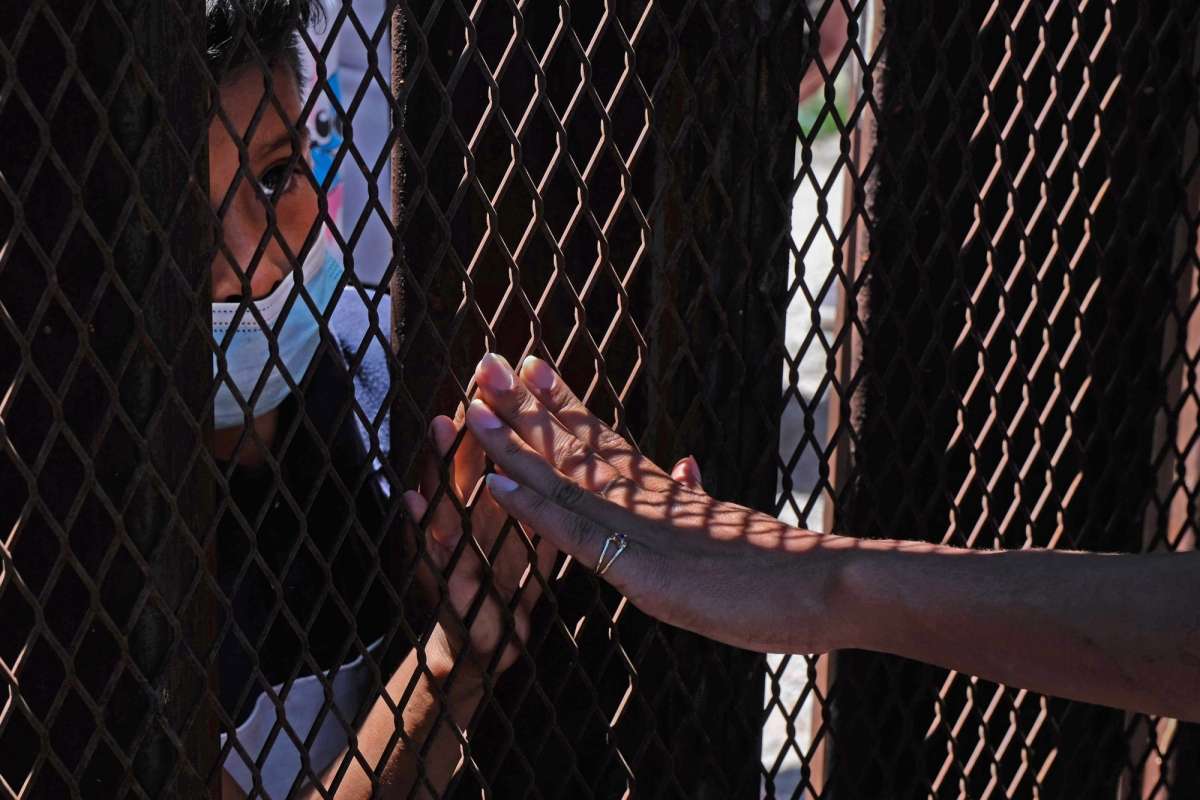Many migrants were acutely aware of looming policy changes designed to stop illegal crossings and encourage asylum seekers to apply online and consider alternative destinations…reports Asian Lite News
Pandemic-related asylum restrictions that expelled migrants millions of times were lifted early Friday, as people raced to enter the United States before new rules announced by President Joe Biden’s administration set in.
Meanwhile, the administration was dealt a potentially serious legal setback when a federal judge temporarily blocked its attempt to release migrants more quickly when Border Patrol holding stations are full.
Migrants, including children, in northern Mexico paced along a U.S. border strung with razor wire and bolstered by troops, unsure of where to go or what to do next. Others settled into shelters, determined to secure an asylum appointment that can take months to schedule online.
The expiring rules, known as Title 42, have been in place since March 2020. They allow border officials to quickly return asylum seekers back over the border on grounds of preventing the spread of COVID-19.
US authorities have unveiling strict new measures, which crack down on illegal crossings while also setting up legal pathways for migrants who apply online, seek a sponsor and undergo background checks. If successful, the reforms could fundamentally alter how migrants arrive at the U.S.-Mexico border.
Many migrants were acutely aware of looming policy changes designed to stop illegal crossings and encourage asylum seekers to apply online and consider alternative destinations, including Canada or Spain.
“I don’t know what’s going to happen,” said Jhoan Daniel Barrios, a former military police officer from Venezuela as he paced with two friends along the the border in Ciudad Juárez, across from El Paso, Texas, looking for a chance to seek refuge in the U.S.

“We don’t have any money left, we don’t have food, we don’t have a place to stay, the cartel is pursuing us,” said Barrios, whose wife was in U.S. custody. “What are we going to do, wait until they kill us?”
Last week, Barrios and his friends entered the U.S. and were expelled. They had little hope of a different result Thursday.
On the U.S. side of the river, many surrendered immediately to authorities and hoped to be released while pursuing their cases in backlogged immigration courts, which takes years.
It was not clear how many migrants were on the move or how long the surge might last. By Thursday evening, the flow seemed to be slowing in some locations, but it was not clear why, or whether crossings would increase again after the coronavirus-related restrictions expire.
A U.S. official reported the Border Patrol stopped some 10,000 migrants on Tuesday — nearly twice the level from March and only slightly below the 11,000 figure that authorities have said is the upper limit of what they expect after Title 42 ends.
More than 27,000 people were in U.S. Customs and Border Protection custody, the official said.
“Our buses are full. Our planes are full,” said Pedro Cardenas, a city commissioner in Brownsville, Texas, just north of Matamoros, as recent arrivals headed to locations across the U.S.
The new policies crack down on illegal crossings while also setting up legal pathways for migrants who apply online, seek a sponsor and undergo background checks. If successful, the reforms could fundamentally alter how migrants arrive at the U.S.-Mexico border.
But it will take time to see results. Biden has conceded the border will be chaotic for a while. Immigrant advocacy groups have threatened legal action. And migrants fleeing poverty, gangs and persecution in their homelands are still desperate to reach U.S. soil at any cost.
While Title 42 prevented many from seeking asylum, it carried no legal consequences, encouraging repeat attempts. After Thursday, migrants face being barred from entering the U.S. for five years and possible criminal prosecution.
Holding facilities along the border already were far beyond capacity. But late Thursday, U.S. District Judge T. Kent Wetherell, an appointee of President Donald Trump, halted the administration’s plan to begin releasing migrants with notices to report to an immigration office in 60 days when holding centers reach 125% capacity, or where people are held an average of 60 hours. The quick releases were to also be triggered when authorities stop 7,000 migrants along the border in a day.
The state of Florida argued the administration’s plan was nearly identical to another Biden policy previously voided in federal court. Earlier Thursday, the Justice Department said its new move was a response to an emergency and being prevented from carrying it out “could overwhelm the border and raise serious health and safety risks to noncitizens and immigration officials.”
Weatherell blocked the releases for two weeks and scheduled a May 19 hearing on whether to extend his order.
Homeland Security Secretary Alejandro Mayorkas had already warned of more crowded Border Patrol facilities to come.
Even as migrants were racing to reach U.S. soil before the rules expire, Mexican President Andrés Manuel López Obrador said smugglers were sending a different message. He noted an uptick in smugglers at his country’s southern border offering to take migrants to the United States and telling them the border was open starting Thursday.














